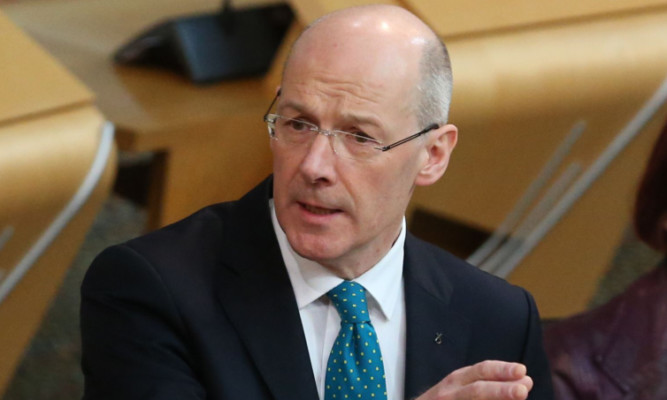Plans to create an ID database will not receive added scrutiny at Holyrood after the Scottish Government won a knife-edge vote.
Children’s Minister Aileen Campbell, currently on maternity leave, turned up in the chamber and backed SNP plans to expand the NHS register to cover all residents and share access with around 120 public bodies, including HM Revenue and Customs.
Opposition parties argued the system is “a precursor to an ID card”, with the Lib Dems claiming it could leave people’s personal information at risk of being searched, profiled and mined, and the Conservatives accusing ministers of being “overly intrusive”.
A bit to force the scrutiny issue out of committees and into the main debating chamber was narrowly defeated, with a Government amendment being passed by 64 votes to 61.
Deputy First Minister John Swinney insisted the expansion of the use of the NHS Central Register (NHSCR) was the most secure and accurate way of identifying those eligible to pay the new Scottish rate of income tax.
Failure to identify even just 1% of those who should be paying the new rate of tax, to be introduced next month, would cost the public purse £50 million or more, he added.
The NHSCR holds the basic demographic details of everyone who is born, who has died, or is, or has been, on the list of a GP in Scotland.
Each individual in the NHSCR is given a unique citizen reference number.
The National Records of Scotland also has access to postcode information provided by health boards, but it is not currently permitted to hold this information in the NHSCR.
The Government wants this additional postcode data to be added to the register and shared with other public bodies.
Liberal Democrat leader Willie Rennie said: “The problem is this: if there is an all-encompassing single database with one single number for each individual, with no consent required, then it is simple to produce a card with that number and stick a picture on it too.”
Mr Swinney said the “strictly controlled use” of the NHSCR would be the “most secure, accurate, privacy and user-friendly way” to ensure correct identification of Scottish taxpayers.
He added: “Decisions will also only be taken after there has been full parliamentary scrutiny of any proposals that we advance.”
